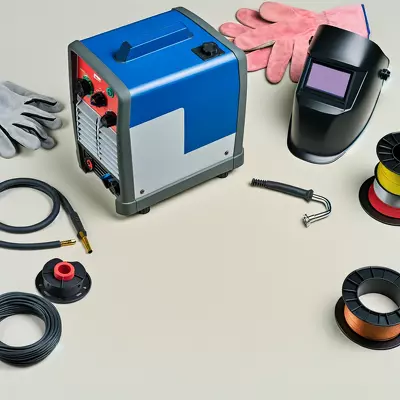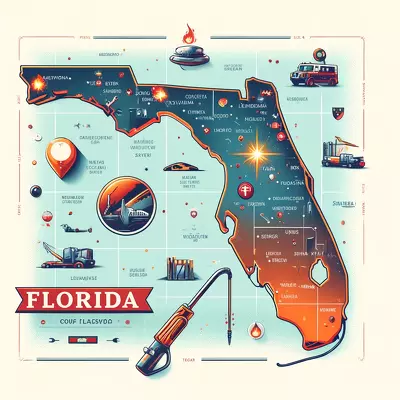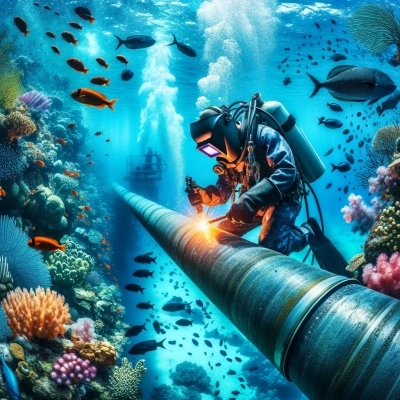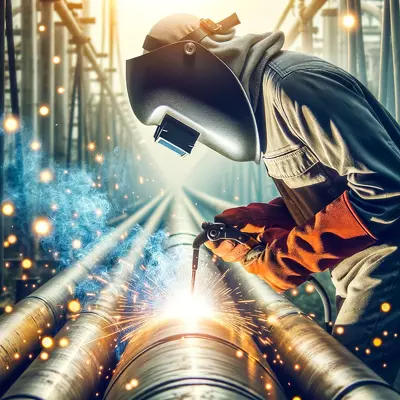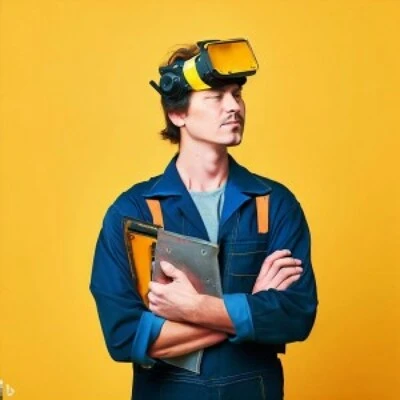Forging Futures: A Comprehensive Journey to Becoming a Pipeline Welder
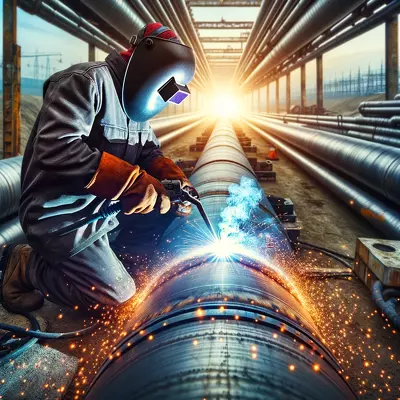
I. Introduction
Pipeline welding stands as a critical profession within the construction and maintenance sectors, responsible for the integrity and safety of pipelines that transport water, oil, gas, and other substances crucial to the economy and everyday life. This article delves into the journey of becoming a pipeline welder, covering educational requirements, certification, and the path to career advancement, reflecting the profession’s complexities and demands.
II. Understanding the Role of a Pipeline Welder
A. Job Description and Responsibilities
Pipeline welders specialize in welding materials to construct and repair pipelines. Their work is pivotal in ensuring the safe and efficient transport of materials. This role involves reading blueprints, following safety protocols, and executing precise welding techniques under various conditions.
B. Importance in the Industry
Pipeline welders are indispensable in sectors such as oil and gas, utilities, and construction. Their expertise ensures the structural integrity of pipelines, which is crucial for preventing leaks and environmental hazards, thus maintaining the flow of essential resources.
C. Skills and Qualities Needed
Success in this field requires a blend of technical skills, including proficiency in different welding techniques and the ability to interpret blueprints. Personal qualities such as attention to detail, physical stamina, and a commitment to safety are equally important.
III. Educational Pathways
A. High School Preparation
Prospective pipeline welders can begin preparing in high school by taking courses in mathematics, physics, and shop classes that introduce basic welding and metalworking skills.
B. Vocational Training and Apprenticeships
Post-secondary vocational training programs offer foundational knowledge and hands-on experience in welding. Apprenticeships, on the other hand, provide an opportunity to learn specialized skills while working under the guidance of experienced welders.
C. Welding Certification Programs
Certification programs, often offered by technical schools and community colleges, focus on advanced welding techniques and safety standards necessary for pipeline work. These programs typically culminate in certification, which is a crucial credential for aspiring pipeline welders.
IV. Gaining Experience
A. Entry-Level Positions
Starting in entry-level positions allows individuals to apply their skills in real-world settings, laying the groundwork for a career in pipeline welding. These positions often involve assisting experienced welders and learning the nuances of the trade.
B. On-the-Job Training
On-the-job training is a vital component of a pipeline welder’s career progression, offering exposure to various welding methods and pipeline projects. This hands-on experience is invaluable for skill development.
C. Specialized Pipeline Welding Techniques
Gaining proficiency in specialized techniques, such as shielded metal arc welding (SMAW) and gas tungsten arc welding (GTAW), is essential for pipeline welders. Mastery of these techniques is often achieved through continued practice and advanced training.
V. Certification and Licensing
A. Types of Welding Certifications
Several welding certifications are relevant to pipeline welding, including the Certified Welder (CW) and Certified Welding Inspector (CWI) designations from organizations like the American Welding Society (AWS). These certifications validate a welder’s skills and adherence to industry standards.
B. State and Federal Licensing Requirements
In addition to certifications, some states and federal regulations may require pipeline welders to obtain specific licenses to work on certain projects. These requirements vary by location and project type.
C. Continuous Education and Recertification
Continuous education and recertification are crucial for staying current with evolving welding technologies and standards. Pipeline welders must regularly update their skills and certifications to remain competitive in the field.
VI. Building a Career in Pipeline Welding
A. Finding Employment Opportunities
Job opportunities for pipeline welders are found in various sectors, including oil and gas, construction, and utilities. Networking, job boards, and union listings are valuable resources for finding openings.
B. Joining Professional Organizations
Membership in professional organizations such as the AWS can provide valuable networking opportunities, access to industry news, and resources for professional development.
C. Advancing Your Career
Career advancement in pipeline welding may involve specializing in a particular welding technique, moving into supervisory roles, or pursuing additional certifications. Continuous learning and skill development are key to advancing in this field.
VII. FAQs
Q: What type of welding machine is best for pipeline welding?
A: For pipeline welding, stick welding machines or multi-process welders that support shielded metal arc welding (SMAW) are typically preferred for their versatility and effectiveness in various conditions.
Q: How much do welders make on the pipeline?
A: Pipeline welders’ salaries vary based on experience, location, and the complexity of the projects. Experienced welders can earn significantly higher wages, often exceeding the average due to overtime and hazard pay.
Q: What is the most challenging aspect of becoming a pipeline welder?
A: One of the most challenging aspects is mastering the range of welding techniques required and adhering to stringent safety and quality standards, especially when working in harsh or remote environments.
Q: How long does it take to become a certified pipeline welder?
A: The time it takes can vary, typically ranging from a few months for basic certification to several years for advanced certifications and hands-on experience in the field.
Q: Are there any specific safety certifications required for pipeline welders?
A: Yes, depending on the job requirements, pipeline welders often need to complete safety certifications focused on hazardous materials handling, fire safety, and first aid.
Q: Can pipeline welders work internationally?
A: Yes, with the right certifications and experience, pipeline welders can find opportunities internationally, especially in regions with significant oil and gas production.
Q: What is the best way to gain experience in pipeline welding?
A: The best way to gain experience is through apprenticeships, on-the-job training, and working on a variety of projects to develop a broad range of skills.
VIII. Conclusion
A. The Path Forward
The journey to becoming a pipeline welder is marked by continuous learning and skill refinement. Aspiring welders must navigate educational requirements, certification, and the accumulation of hands-on experience to thrive in this demanding but rewarding profession.
B. Emphasizing Safety and Quality
Above all, a successful career in pipeline welding is built on a foundation of unwavering commitment to safety and quality. Adhering to the highest standards ensures the integrity of the pipelines and the safety of the communities and environments they serve.
C. The Future of Pipeline Welding
The future of pipeline welding looks promising, with ongoing advancements in welding technology and techniques. As the demand for energy and resources continues to grow, skilled pipeline welders will remain vital to the infrastructure that underpins modern society.
IX. Suggested Readings
Before venturing into the field of pipeline welding, acquiring a depth of knowledge and understanding through literature can be immensely beneficial. The following books offer insights into the technical, practical, and safety aspects of welding, serving as invaluable resources for both novices and seasoned professionals.
- “Welding Principles and Applications” by Larry Jeffus: A comprehensive guide covering a wide range of welding techniques, including those specific to pipeline welding, with a focus on safety and best practices.
- “Pipeline Welding Handbook” by M. N. Jimenez: This handbook delves into the specifics of pipeline welding, offering detailed explanations of procedures, equipment, and safety measures.
- “Modern Welding Technology” by Howard B. Cary: This book provides an in-depth look at the latest technologies and methodologies in welding, including those applicable to pipeline construction and maintenance.
- “The Procedure Handbook of Arc Welding” by The Lincoln Electric Company: A classic resource that combines foundational welding knowledge with advanced techniques and applications, including those relevant to pipelines.
After exploring these resources, individuals will find themselves better prepared to embark on or advance within their pipeline welding careers. Each book offers unique perspectives and knowledge, contributing to a well-rounded understanding of the field and emphasizing the importance of continual learning and adaptation in the ever-evolving world of pipeline welding.

